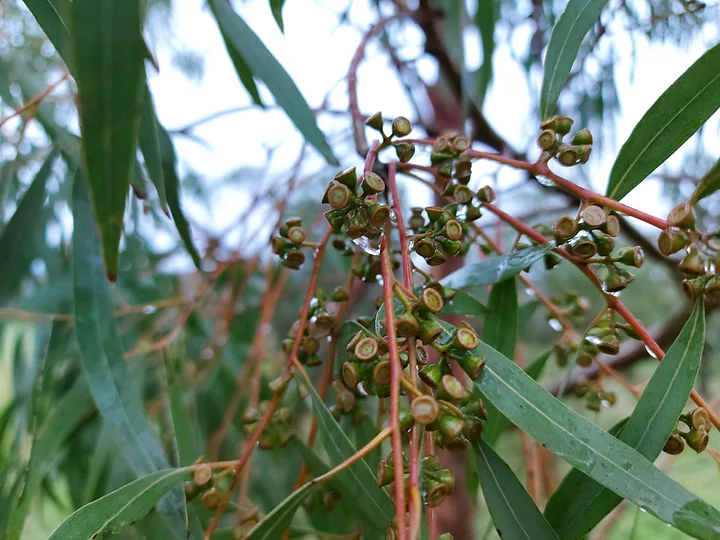
This is just a short blog post to address one of our frequently asked questions.
“If I decide to cut down my eucalyptus, will it keep coming back?”
“Do I have to dig the entire root system out to stop it growing?”
“Will the ghost of the eucalyptus haunt my house?”
Okay, so the last one isn’t real but you get the idea. Eucs get such bad press that some keen gardeners are concerned that once planted, they’ll never go away! Whilst we obviously don’t advocate cutting down any trees without good reason, sometimes you have no alternative. Whether it is because the previous homeowner planted a massive E. gunnii next to your house instead of a sensible dwarf variety, or perhaps you’re having your garden completely redesigned and your beloved Snow Gum is in the wrong location; we understand that sometimes there are no alternatives to removing a tree.
The good news is that these myths aren’t true. Eucalyptus trees aren’t Terminators, and they sadly aren’t immortal.

So where does the idea come from? Well, eucalyptus trees are tough, really tough. You have to be in order to survive in Australia. All the wildfires, droughts, and drop bears conspire to make life very difficult for a little eucalyptus, and so they’ve developed lots of tricks to ensure they can survive.
The first is their epicormic buds, hidden deep beneath the bark. Many trees have epicormic buds, although others (like conifers) don’t. Epicormic buds are concealed under the bark of the tree, suppressed by hormones and waiting for their time to shine! Triggers include damage higher in the plant, or increased light levels (as you might find when your neighbour is cut down). If you’ve ever seen an oak tree in the woods with a profusion of little shoots up the trunk, then you’ve seen them in action.

An unwary gardener might cut down their tree and leave a section of trunk, confident that they’ve killed the tree in question. It would then be quite a surprise to come back a few months later to see lots of vigorous new growth! This characteristic is what makes eucalyptus trees such good candidates for growing as a pollarded shrub, and it also makes life much easier for flower farmers.
The next consideration is the lignotuber, which you might see on a mature eucalyptus as a chunky little swelling at the base of the trunk where it meets the root crown. The lignotuber is another adaptation to wildfires, allowing the tree to quickly recover from the intense heat and scorching flames. The lignotuber contains lots of buds that can be used to sprout new shoots, along with starch stores that can feed the tree without photosynthesis.
If you cut down your eucalyptus to ground-level, you may then find that it reshoots from either the lignotuber or whatever remains of the trunk. This also isn’t unique to eucalyptus trees, you’ll see it in everything from hazel to lime trees.

The ability to regrow like this is very useful. It means that a tree can come back if killed by harsh weather, and it also allows you to create a bushy multistem shrub instead of a standard. With regards to a tree you no longer want, you simply need to dig out the lignotuber if one is present.
As for the the ability to spread underground, I’ve not been able to find any evidence of this. Some trees are able to reproduce in this way; poplar trees in particular can send up suckers from their extensive root systems to form new trees. This is why when you find a mature poplar tree in the woods, it is often surrounded by little offspring. A thorough trawling of the internet for evidence of eucalyptus trees reproducing in this manner turned up only a single unreferenced note on the subject, and nothing from reputable sources.
Finally, you might be wondering if eucalyptus trees can spread by seed, as with other non-native pioneer species (I’m looking at you, sycamores). A eucalyptus tree needs to be approximately 5-7 years old before it begins to flower. Eucalyptus trees will set seed in the UK, but they do not reliably germinate. Our climatic conditions are less than ideal for germination, and the risk of eucalyptus trees spreading by seed is generally considered to be low. Certainly compared to some of our more persistent native species such as sycamore, willow, and oak trees.

So, to summarise; eucalyptus trees are hardy survivors, but they aren’t some sort of woody Terminator! You can go ahead and plant one, safe in the knowledge that you can get rid of it if you need to.
Tel: 01905 888 098
Monday-Friday, 9.00am-4.00pm
Grafton Nursery,
Worcestershire
(Visits by appointment)


We’re here to help you choose your Eucalyptus
We’ll also email you with expert seasonal advice for
your Eucalyptus & exclusive offers. No spam – just Eucalyptus.
You can opt out at any time. Click here to see our privacy policy in full.